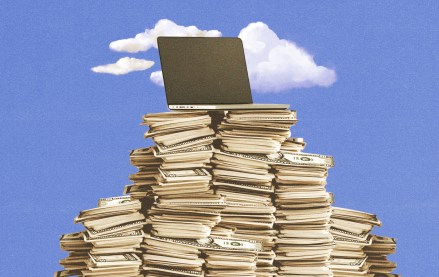
by Sachin Kamdar, CEO, Parse.ly
Those who work in digital publishing are always thinking about what’s next, and back in 2012, that was data. When Parse.ly launched that year, I wrote in Mediashift, “It will become common practice to ‘interview the data’ when designing an editorial calendar, or selecting featured articles and posts for the near future. In fact, many newsrooms will require it.”
Today, the next step is for digital publishers to use that data to their greatest advantage.
Publishers poised to go data crazy in January 2012
My prediction from five years ago was hopeful. I wanted to see what happened when newsrooms and content creators could access audience data. What possibilities would arise with the power to understand your audience better and make their work more impactful?
As more digital publishers began adopting data, they also began debating its value and context. “While many news organizations freely share site metrics with their staff members, the growing availability of pageview and engagement data raises thorny news judgment questions that editors and reporters are grappling with on a daily basis,” wrote Mary Clare Fischer for the American Journalism Review in early 2014.
Later that year, BuzzFeed leaked an internal report from the New York Times that shifted how the digital world thought about, well, everything. The report criticized the Times’s many difficulties adjusting to digital platforms. Nieman Lab’s Joshua Benton called it “one of the key documents of this media age.”
The Times report showed how access and usage of data were becoming more desirable, with clear benefits and goals for the writers, businesses and audience. Going data crazy wasn’t just for BuzzFeed anymore; it was essential in newsrooms and media companies across the globe. And the news reflected it.
Freek Staps, a 2015 Knight Visiting Nieman Fellow wrote, “Every day, a journalist should send the entire newsroom an email about the daily numbers and what they actually mean. Which stories performed best, and why? What can we learn from the use of certain kinds of headlines? Did the amount of time spent by readers on a specific story reveal a curiosity gap between the headline and the content actually delivered?”
Bob Sauerberg, then president of Conde Nast, echoed that sentiment, noting in May 2015 that the publisher could use its insights on trends to “connect it to this massive digital business that we’ve built and that data that comes along with it.” This, to Sauerberg, gave the company an advantage in the industry.
Publishers went data crazy, now they have to get data smart
After seeing years of headlines about audience data, we enlisted Digiday’s Custom studio to see just how much data publishers have now, and what challenges we can expect in the coming years.

Over 80 percent of people, it turns out, have direct access to how their audiences respond to their content online, and the percentages across publishers are even higher, a clear difference from five years ago. Without access to data about their audiences, any chance of publishers gaining insights from analytics is lost.
However, the research revealed the gaps that still exist between having this data and publishers’ and brands’ ability to understand and use it. Making the leap from seeing information to using that information to improve digital publishers’ work is the next step in this journey. Smart application of data is how companies move forward and do incredible things.
Read the full report here.
More in Media

BuzzFeed’s sale of First We Feast seen as a ‘good sign’ for the M&A media market
Investor analysts are describing BuzzFeed’s sale of First We Feast for $82.5 million as a good sign for the media M&A market — which itself is an indication of how ugly that market had become.

Media Briefing: Efforts to diversify workforces stall for some publishers
A third of the nine publishers that have released workforce demographic reports in the past year haven’t moved the needle on the overall diversity of their companies, according to the annual reports that are tracked by Digiday.

Creators are left wanting more from Spotify’s push to video
The streaming service will have to step up certain features in order to shift people toward video podcasts on its app.





